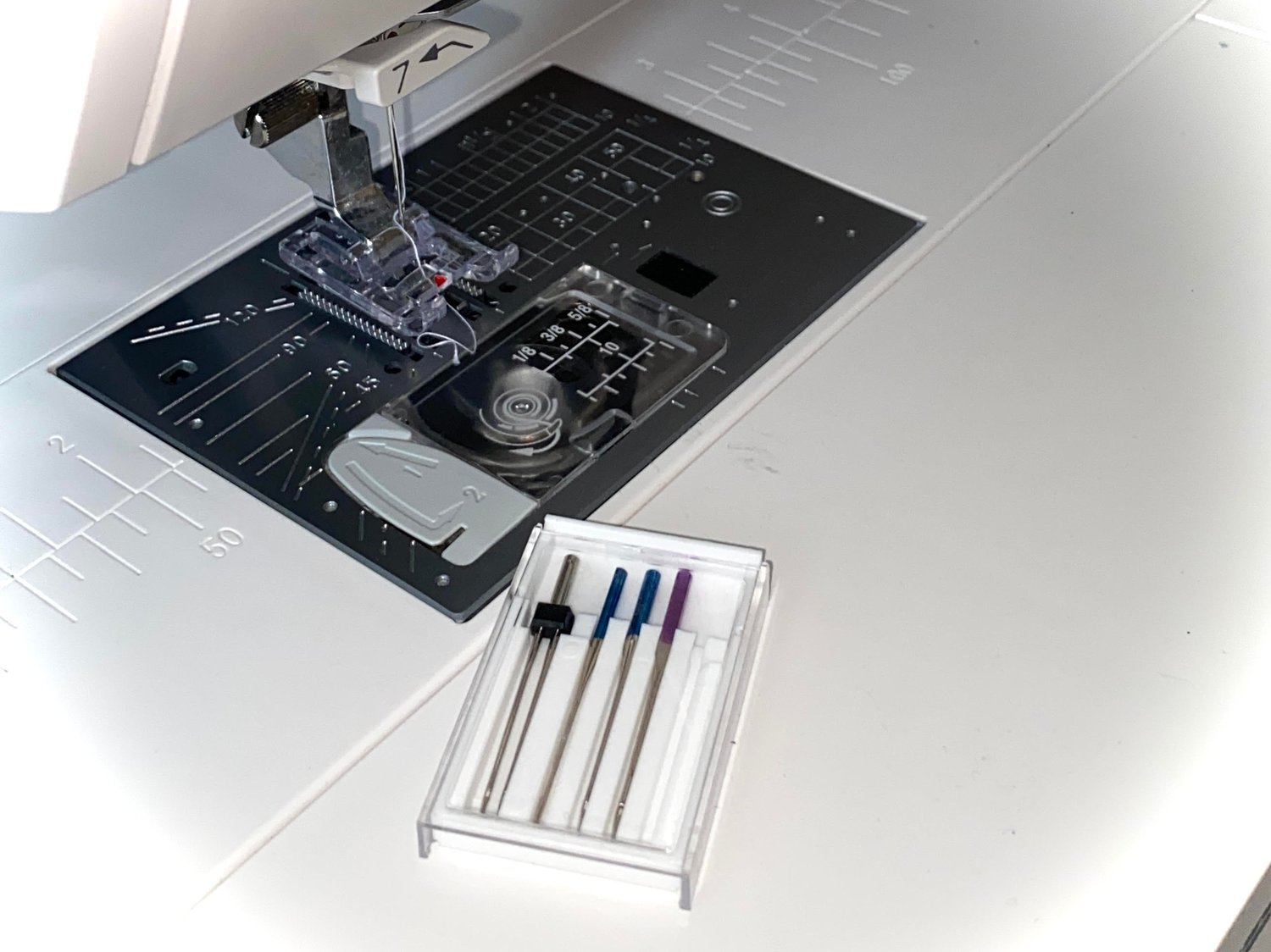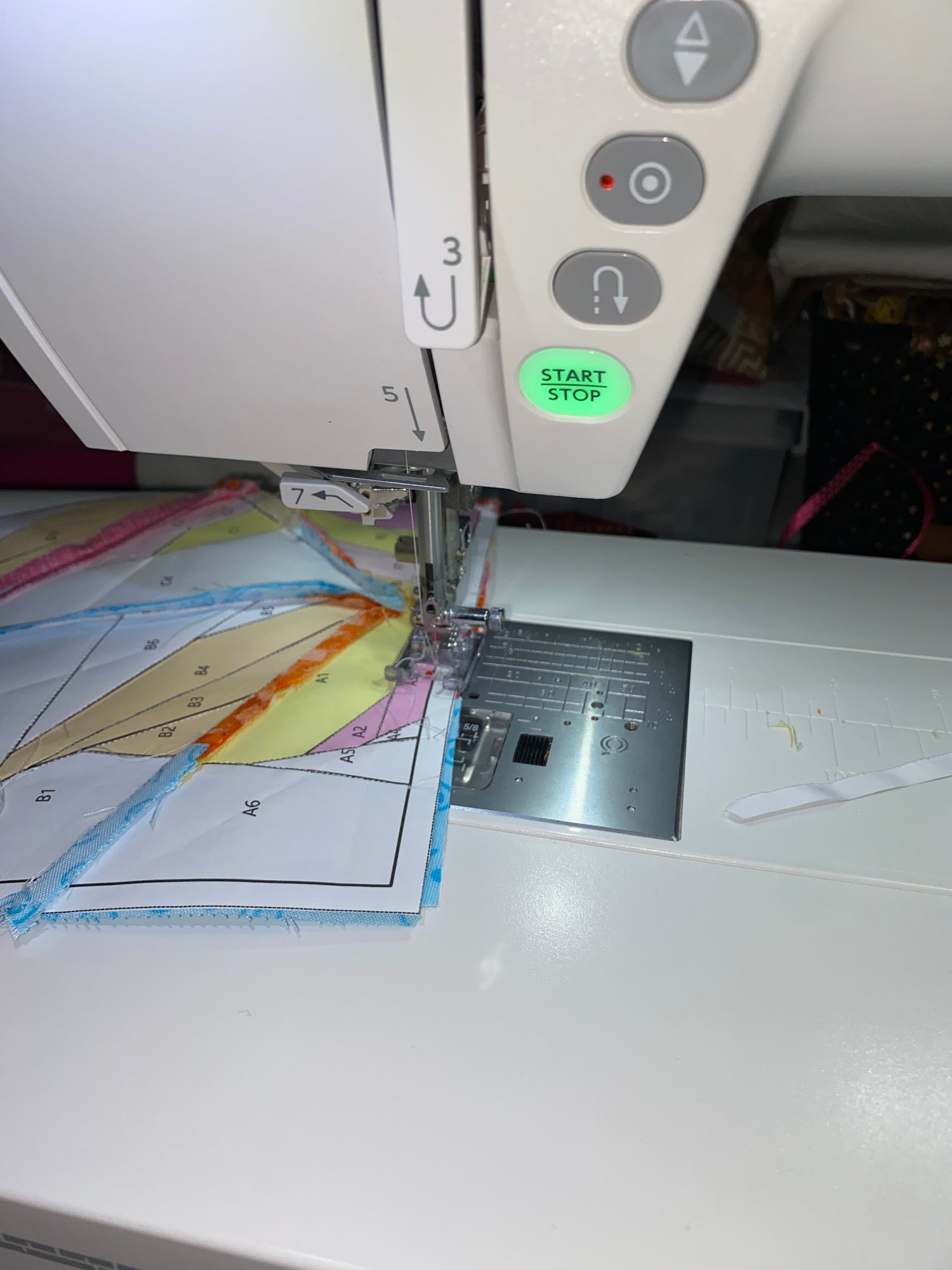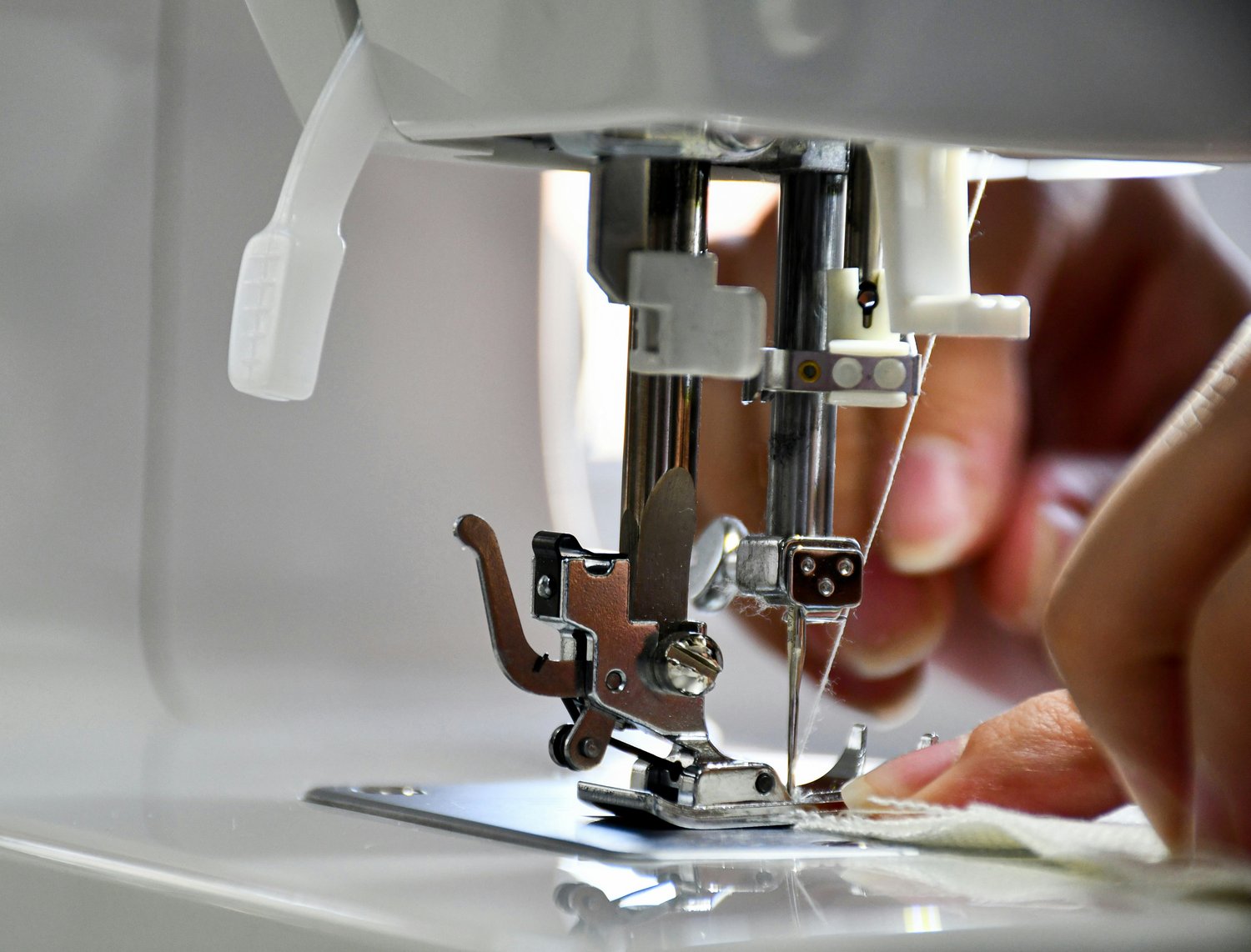Most quilters who love paper piecing will tell you that to achieve the best results when paper piecing, you need to change your sewing machine needle more frequently than sewing fabric alone. However, whether you're a seasoned paper piecer or just starting out one thing that often gets overlooked in the paper piecing process (and something that can significantly impact your results) is the type of needle you use. In this post, I'm going to tell you a bit more about choosing the right needles for paper piecing and how it can elevate your quilting projects to new levels of precision.

Why Needle Selection Matters
When it comes to paper piecing, every stitch counts. You probably already know to change your needle more frequently because the paper dulls the needle more quickly than sewing through fabric alone. Something you may be less aware of is that the needle you use plays a crucial role in the paper piecing process and should probably be considered more carefully. A smaller and sharper needle can help you achieve clean, accurate seams while minimizing fabric distortion and paper tearing. While a standard sewing machine needle can get the job done, opting for a needle specifically designed for quilting or precision work can make a world of difference, and you might be surprised at the types of needle there are to consider!

Microtex Needles: The Precision Choice
One type of needle that's highly recommended for paper piecing is the Microtex needle. These needles feature a very fine, sharp point that easily pierces through fabric and paper without causing excessive damage. The sharpness of Microtex needles ensures clean entry and exit points, resulting in crisp and precise stitches.
Quilting Needles for Durability
Another excellent option for paper piecing is quilting needles. These needles are designed to withstand the demands of stitching through multiple layers of fabric and batting, making them a durable choice for intricate quilting projects. Quilting needles typically have a slightly rounded point, which can also help reduce fabric puckering and ensure smooth stitching.
Choosing the Right Needle Size
In addition to the type of needle, the size of the needle also plays a crucial role in paper piecing. Opt for a smaller needle size, such as 70/10 or 80/12, for finer stitches and greater precision. Smaller needles create less noticeable puncture holes in the paper and fabric, resulting in a cleaner overall appearance.
Tips for Needle Care
To ensure optimal performance from your needles, remember to change them regularly, especially if you're working on a large paper piecing project. Remember that blunt or damaged needles can cause skipped stitches, fabric snags, and frustration. Also keep an eye out for dust build-up from your fabric, paper and thread. Give your entire machine (including the needle) a light dust and gentle blow-out every so often to remove dust and keep your machine running smoothly.

Final Thoughts
When it comes to paper piecing, every detail matters. While up until now you may have overlooked the type of needle you have been using a standard sewing machine needle without much thought, I would encourage you to consider experimenting with more specialized and smaller needles. By choosing the right needles for your projects from the start, you not only ensure flawless seams, sharp points, and stunning quilt designs but also potentially reduce the frequency of your needle changes. Experiment with different needle types and sizes to find the perfect combination that suits your paper piecing style and preferences.
I hope you found this blog post helpful, if you did, or have anything to add to help other quilters, please feel free to leave a comment!



Comments ()